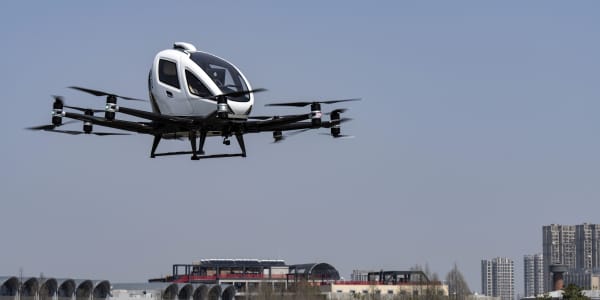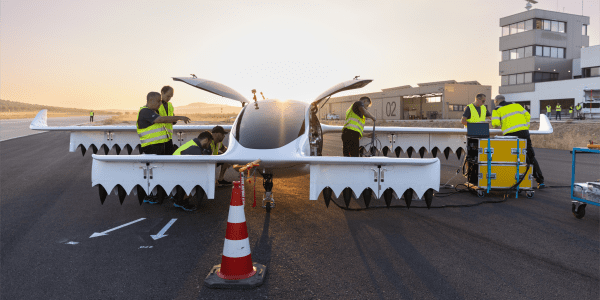Satellites are becoming both smaller and cheaper, and one company in Finland is moving to capitalize on its early success as quickly as possible.
Fresh off its debut launch in January, startup ICEYE more than doubled its total backing in a recent $34 million round of venture capital fundraising. ICEYE is combining a special type of earth observation technology – known as synthetic aperture radar (or SAR) – with a microsatellite form factor and a low Earth orbit.
The new funds mean ICEYE will be able to take that first launch and upgrade the proven technology, closing in on its goal of building the world's largest SAR satellite constellation.
"We get two years of time, we get nine satellites, and we can tell our customers that we have a completely financed product," CEO Rafal Modrzewski told CNBC.
ICEYE's first satellite, X1, was about the size of a microwave. Launched aboard an Indian Rocket with 30 other satellites, X1 took 600 images during its first few months "and they were really good quality," Modrzewski said.
The success of the X1 mission was a catalyst that is now pushing ICEYE even farther than expected. Modrzewski said the company was able to sell imaging from its experimental mission, even though it was not necessarily planning to do so before the launch.
"It turned out to be a product that distributed really, really quickly because people really wanted to see that this was happening," Modrzewski added.
The company's goal is to build a constellation that can image anywhere in the world within an hour, according to Modrzewski. Two years of funding toward nine satellites gets ICEYE halfway to its goal of 18, which the CEO said would be capable of imaging anywhere in the world in 3 hours. With the previous largest SAR constellation only totaling four satellites, ICEYE is on track to surpass that before 2020.
The cost to build and launch each ICEYE microsatellite is close to the recent amount of funding raised, Modrzewski said, meaning each comes with a price tag near $3 million. ICEYE has "identified over 50 improvements based on" the X1 mission, he added.
Despite those coming upgrades, ICEYE estimates its X2 satellite and others "will cost almost the same as X1," Modrzewski said, "even though it has more capability and we are adding more subsystems."
At the time of the X1 launch, ICEYE had a team of about "50 to 60 people," Modrzewski said. The new funds will allow ICEYE to hire another 20 people by the end of this year, he said, with plans to double the team.
ICEYE's previous investors, including True Ventures, Draper Nexus, Draper Associates, Seraphim Capital and Space Angels, all contributed to the latest round of funding, along with OTB Ventures, Tesi, Draper Esprit and Promus Ventures. Modrzewski said the recent fundraising "was a standard Silicon Valley round" of funding. With $53 million in total funding raised, traditional venture capital metrics would value ICEYE at about $80 million.






